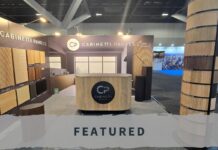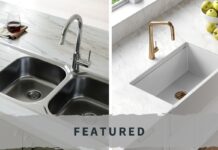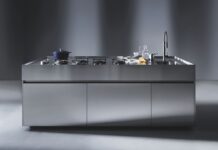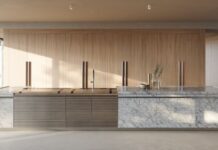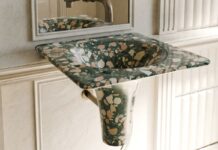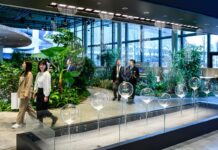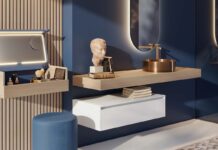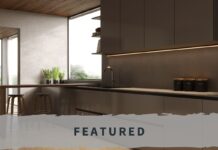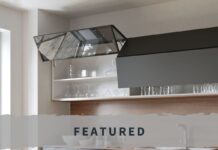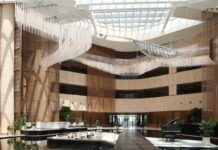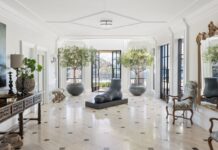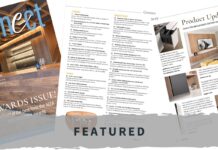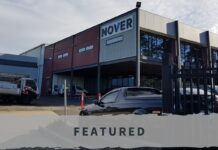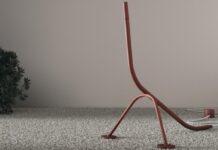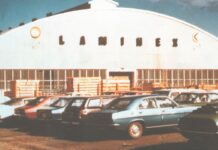Today we meet Brett Ambrose who is best known as the Managing Director for Blum Australia with an amazing 38-year history in the industry. As he contemplates retirement, we sat down to chat about his incredible time with Blum and how he started in the industry.
Brett’s relationship with Blum started in 1986. At that time, Brett’s main experience was in sales, having gone straight from school into a sales support role and completing a marketing certificate at TAFE.
Spotting a job ad in the newspaper, he applied for and was employed as a salesperson for Richard Small Distribution, based out of a small facility in Marrickville. Richard was the agent for a number of products, including office furniture as well as a lesser-known brand – Blum. Brett’s initial contact was more with office furniture than with Blum products but, shortly after he started, the incumbent Sales Representative resigned, and Brett was promoted to the position.
As his time with Richard progressed, Brett took on more management roles that he says were a better fit with his skill set. “I was talking more to people, dealing with distributors and looking at what support they needed,” he explains. “As we grew, that also meant I needed to become involved in stock management and logistics”.
The business grew, necessitating more staff. This provided Brett with the opportunity to gravitate into the administrative and management side of the business.
Happily, this coincided with an expansion of Blum’s product line as the company introduced a new range of drawers to supplement the hinges and runner systems. “This created new challenges within the logistics area so we really had to think about how to manage stock and work with the distribution network,” Brett says.

Within a month or two of starting with Richard Small Distribution, Brett attended a show called Profurn in Melbourne. At that time there were no large exhibition buildings but it showed the industry what was possible and Brett was a witness to the set up of the AWISA shows.
“AWISA was driven by the industry realising the power of these trade shows. We created an association, met Geoff Holland and started planning. The first show was in the Yennora Woolsheds which was the only clearspan space that was large enough at the time,” says Brett.

Not long after this, the original facility at Sydney’s Darling Harbour was built and this allowed for the expansion of the show which soon included Melbourne as a location. “It was always a hit from a machinery point of view,” says Brett. “On the hardware side it was definitely the personalities who drive the show. There were characters who pushed hard and brought an entrepreneurial spirit to making it happen”.
Brett remembers his first visit to Interzum in 1987. “I flew for 30 hours to get there,” he laughs. “It wasn’t an easy thing to do in those days and it meant a long time away from a business but it was an amazing experience”. Brett attended Interzum 16 times in total and, in the beginning, having visitors from Australia was an unusual and unexpected occurrence.
“In the early days at Interzum, the visitors were mainly entrepreneurs looking for new products so it’s changed quite a bit. The show has now moved towards more statements from major businesses about where they are headed and the decorative side of things has become a bit more complex,” he adds.

1997 saw the next big shift with Richard Small retiring and Blum Austria, by mutual agreement, bought the agency to create a new entity – Blum Australia. The new entity was a wholly-owned subsidiary of Blum Austria and all the staff transitioned to become Blum Australia staff, with the new management team consisting of Brett as Managing Director, and Bryan Cairnduff and Ron Redman as Sales Managers.
These changes were in the context of so many other changes happening both within the industry and across all businesses. “When I first started communicating with Blum it was via Telex,” Brett laughs. “We even employed a Telex operator specifically for that reason. Then we moved to faxes and soon after we started establishing email addresses to access the company intranet”.
As the technology swiftly changed the landscape, so too did Blum’s product line continue to expand with the appetite for drawers branching out into the need for full-extension runners, and then soft-close mechanisms. “Blum wasn’t necessarily the first to market with these new products, but we were the first to really invest in selling the functionality and usability aspects,” Brett explains.
“We were in the right place at the right time, with the right products, backed by new technologies that helped with the flow of information,” says Brett. “The relationships we could build were suddenly very different and that coincided with a new approach to kitchen design in Australia”.

In the early 2000s, we saw a phenomenal focus on kitchens. Cooking shows were on every channel and the rise of the celebrity chef was in full flight. Renovation and DIY shows were opening homeowner’s eyes to what could be achieved and, all of a sudden, there was an insatiable hunger in the market for hardware.
Blum’s hardware solutions met many of the demands of consumers with more education around the benefits of drawers, the added functionality of soft-close mechanisms and the practicality of in-drawer organisation.
“At this time, we were still working under the original distribution networking arrangement with the distributors placing direct orders and importing the bulk of their stock directly to premises,” Brett explains. “While this had its benefits, it was limited by the space available to store stock and impacted our ability to predict which way the market would go”.
The solution was a purpose-built premises to provide better opportunities to support the distributors, so plans began in 1997 to build a facility in Moorebank. “I don’t think anyone genuinely saw how quickly the market would grow and how fast it would take off,” Brett reflects. “But we could see that the trajectory meant we had to focus on logistics as a main priority”.
The building in Moorebank was Blum’s home for 10 years and it became the hub through which the distributor network was able to scale, allowing previously small enterprises to become national businesses to further support the Blum brand.
“We had just moved into the Moorebank building and we held a presentation for distributors,” Brett recalls. “We created three kitchens in the loading bay – a kitchen from 1997 with no drawers, a kitchen with hinges and some Metabox drawers, and a fully fitted-out Tandembox kitchen with Orgaline”. This became the first of a program of education, training and consultation to ensure a deep connection with the brand and clear understanding of the products and benefits.

As it drew close to the 10-year anniversary of the Moorebank premises, it became clear that the growth in the industry meant more support was needed for the distributor network so a plan was made to build another building that would house a purpose-built, highbay, automated warehouse. “Logistically it just made more sense for Blum Australia to handle orders for everyone,” Brett explains. “Our distributors had scaled up to support the Blum products so it made sense for us to scale up the Blum Australia operation to allow us to service them properly”.
The building process for the new premises was a challenge but Brett relished the opportunity to create something world-class that would show Blum’s commitment to the Australian market. Luckily Blum has many similar facilities around the world so Brett and his team were able to access information and assistance internally to help the building process run smoothly. Even so, it took close to two years to find appropriate land, obtain the necessary permits, finalise the design and get the building under construction. Even with a Project Manager in place, Brett says there was a mountain of administration in order to manage the project properly.
The property was completed in 2010, and then expanded in 2016 when the highbay tower was doubled in size. This activity happened at the same time that David Noakes (Sales Manager) and the Blum sales team was expanding its purpose-built showrooms around Australia and increasing the sales teams to keep pace with product development and provide support for an increasingly complex product range.
“We do have a large and somewhat complex product range so getting that balance right about how much we should stock and allowing for some speculation on what should come in and when to introduce new products was the challenge,” says Brett. “But that’s always been Blum’s attitude – we have to put the effort in and we can’t not provide a premium service”.
When asked to nominate a career highlight, Brett finds it hard to choose just one. “Building the new premises was definitely an experience,” he says. “While we had wonderful support from Austria, it was definitely an Australian/Austrian project and it needed an immense level of collaboration throughout the team to make sure we achieved a good result. Building projects can go astray pretty easily unless all parties are focussed on clear goals so that was my main role”.
 Brett credits the company’s long-standing relationships with distributors as a key reason for the success of Blum Australia. “Some of these relationships are more than 40 years old,” he says. “So, we understand collaboration and support and it’s clear on both sides that we create a win-win situation whether it’s building relationships or building buildings”.
Brett credits the company’s long-standing relationships with distributors as a key reason for the success of Blum Australia. “Some of these relationships are more than 40 years old,” he says. “So, we understand collaboration and support and it’s clear on both sides that we create a win-win situation whether it’s building relationships or building buildings”.
Brett officially retires this year and he is understandably looking forward to having time to invest in a number of jobs that have been pushed back. “The kitchen is priority number one,” he laughs. “As that’s long overdue for renovation. And I spent so many years travelling for business, I relish the chance to travel for pleasure and I’m keen to take more time both in Australia and overseas to look around”.
Once Brett retires, Blum Australia will have a new three-person management team in place which better reflects how the company is growing and changing.
For more information visit https://www.blum.com/au/en/


